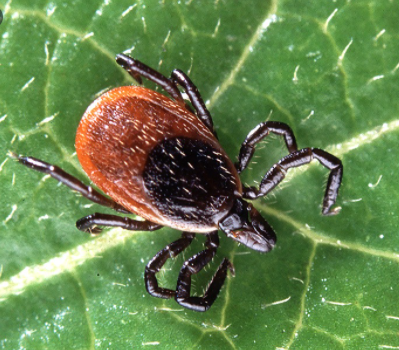THUNDER BAY — A man who's spent the last several years trying to educate Thunder Bay-area residents about blacklegged ticks says it's time again to take protective measures against them.
Ken Deacon says that once temperatures climb over 4 C, ticks that survive the winter become active again.
Ticks may carry the bacteria that causes Lyme disease, and can transmit it to humans through a bite
The disease can include a variety of serious health conditions.
In 2019, the last year that test results for Lyme disease were available, three ticks out of 118 from Thunder Bay that were turned in for testing proved to be infected.
Deacon – the coordinator of the Thunder Bay District Health Unit's vector-borne disease program – says a relatively mild winter and an early spring are danger signals for the coming tick season.
He suspects that their survival rate over the winter was quite high.
"We had one cold snap, but there was snow on the ground," which helps keep ticks insulated, he noted, adding "I think we'll probably have another pretty good year for ticks here."
Deacon said it was challenging to assess the prevalence of blacklegged ticks last year, because of the impact of the COVID-19 pandemic.
"We rely on people, through the passive surveillance program, to bring them into the health unit. The number of submissions dropped by 50 per cent, but there were still ticks, and people did bring them in."
Despite what Deacon calls "the COVID effect," 44 ticks submitted by the public last year turned out to be the blacklegged variety.
However, the federal laboratory in Winnipeg that has tested ticks for Lyme disease in past years no longer does this routinely.
Deacon said he believes the lab is now focused on work related to COVID-19, so it's only accepting ticks that have been collected through an active surveillance program.
"That's a concern," he said.
The TBDHU will still do its best to track Lyme disease through active surveillance which requires a staff member dragging a white sheet over potential infestation locations around the city and immediate surrounding area.
The area within a 20-kilometre radius of Thunder Bay is currently designated one of Ontario's risk areas for Lyme disease.
The health unit believes it should be enlarged, but the provincial government requires evidence first.
"We're trying to expand the risk area either eastward along the shoreline of Lake Superior or maybe farther inland. We have to find them in the spring, and then again in the fall, to show that the population is truly established there."
Under the law, any doctor who treats a patient from a risk area who has symptoms of Lyme disease is required to report the case to the local health unit.
Deacon offered some straightforward advice to anyone hoping to avoid the dreaded diagnosis: "Be careful. Be vigilant. Do your tick checks. Be aware that the danger exists. Blacklegged ticks are out there, and they can be very damaging."
